Geometric Design Philosophy
Every year, the overflowing Nile floods its banks, and then exposes them again, leaving the fertile soil open. Each year, the ancient Egyptians had to re-measure their land and determine their boundaries. Later, the ancient Greeks described this process and called it geometry - the measurement of the earth. Geometry was represented by the principle of establishing order and law in the world. Household procedure has become a science.
Ancient geometers sought to find universal principles and laws that are embodied in the figures of all things on earth. Today, their discoveries are often used in design. For example, typographic grids can be built on the basis of known proportions. The result will look harmonious and pleasing to the eye.
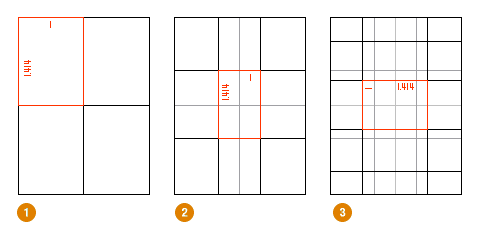
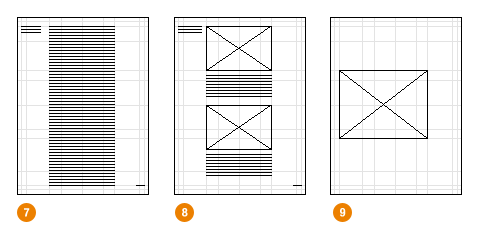
')
But do we know why such proportions arose? What is the point in them closed? What did the ancients see and why did they persistently use them to create works of art, especially those that had a religious meaning?

This image of the XVI century. geometry is represented by a woman. She ponders on the laws and principles of the structure of the world. Men depicted around her embody these principles in everyday life. Thus, ideas and philosophical concepts find expression in material objects and practices.
All of us in design today are enthusiastically engaged in practitioners, we produce products. However, it is interesting and useful sometimes to return to classical education and even dig deeper to learn about the ideas behind our practice that have existed for many hundreds of years. Well, that is to learn more about the woman :)
Under the cut, I'll describe it a little more.
So back to the Greeks. Plato believed that geometry is a universal philosophical language. He believed that it was a great way to dive into philosophical meditation. It is said that an inscription hung above the threshold of his house: “Let him not experienced in geometry not enter my door.” According to Plato, reality consists of pure entities or archetypical Ideas, and we comprehend only their reflections.
For centuries, scientists have seen the world consisting of geometry and numbers. But numbers understood not in a measuring, but in a qualitative sense. The words “duality” or “triplicity” do not mean the presence of two or three subjects, but they mean complete self-sufficient concepts, each with its own strength. The ancient philosophy was built on this, and the visual arts were built on this philosophy.

Geometric figures were understood not just as figures, but as an expression of these entities. This Japanese calligraphy shows the process of "creation", going from the circle - "the unity of all things" through the triangle to the final square shape.
This approach is the basis of many ancient works. Ideal, natural, beautiful proportions were derived by artists trying to know them in the nature of geometry, numbers, and "ideas."
For example, a graphic expression of a geometric progression.
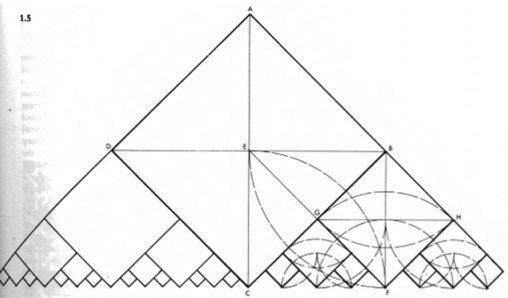
Geometric progression, the number of the root of two, the root of three and five formed the basis of many objects and structures.
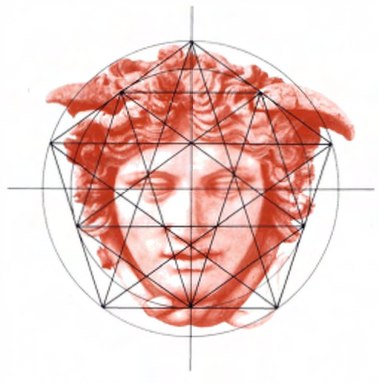
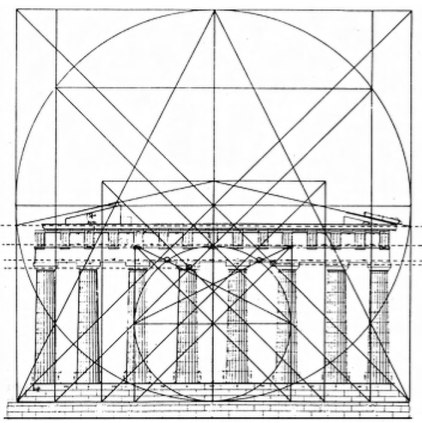
Now it is hard for us to understand all this. We perceive numbers in a completely different, measuring sense. It is difficult for us to understand why many European scientists in the Middle Ages considered zero to be the number of the devil.
The technological form of knowledge of the world has won and became generally accepted. The laws that deduced distant ancestors reach us in the form of scraps. Philosophical concepts of knowledge of the world, not included in the classical education, are now pseudo-sciences, and their pieces exploit all kinds of charlatans.
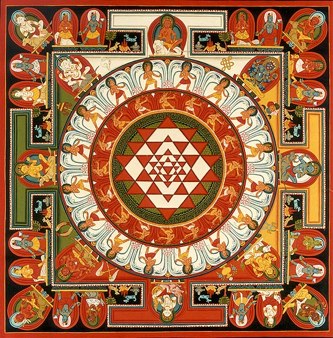
Maybe it's for the best. The modern system has advanced human capabilities far ahead. We live longer, know more and have the power to bang the entire planet, if it with its proportions will completely dissolve us.
However, nature itself and its laws, studied in geometry, have not gone away. All the same, in nature there are proportions, irrational numbers and different sequences. For example, the spiral patterns of growth on sunflowers or in the arrangement of leaves on the stem can be explained by the Fibonacci sequence, but the plant structure of such patterns serves to enhance photosynthesis, maximizing the surface area.

Perhaps a modern designer should look for such examples in nature and learn more about the study of ancient scientists in order to make beautiful and organic things? Perhaps he also needs to learn about the study of these things, which were conducted in antiquity. Not only Western culture, but also Eastern. It would be interesting to learn about proportions, patterns and their meanings in Arabic, Indian, Chinese, Japanese cultures. And it would be interesting to adapt them to modern practice, making a commercial product, familiar to the eyes of contemporaries, but having a depth, meaning of its form.
Ancient geometers sought to find universal principles and laws that are embodied in the figures of all things on earth. Today, their discoveries are often used in design. For example, typographic grids can be built on the basis of known proportions. The result will look harmonious and pleasing to the eye.


')
But do we know why such proportions arose? What is the point in them closed? What did the ancients see and why did they persistently use them to create works of art, especially those that had a religious meaning?

This image of the XVI century. geometry is represented by a woman. She ponders on the laws and principles of the structure of the world. Men depicted around her embody these principles in everyday life. Thus, ideas and philosophical concepts find expression in material objects and practices.
All of us in design today are enthusiastically engaged in practitioners, we produce products. However, it is interesting and useful sometimes to return to classical education and even dig deeper to learn about the ideas behind our practice that have existed for many hundreds of years. Well, that is to learn more about the woman :)
Under the cut, I'll describe it a little more.
So back to the Greeks. Plato believed that geometry is a universal philosophical language. He believed that it was a great way to dive into philosophical meditation. It is said that an inscription hung above the threshold of his house: “Let him not experienced in geometry not enter my door.” According to Plato, reality consists of pure entities or archetypical Ideas, and we comprehend only their reflections.
For centuries, scientists have seen the world consisting of geometry and numbers. But numbers understood not in a measuring, but in a qualitative sense. The words “duality” or “triplicity” do not mean the presence of two or three subjects, but they mean complete self-sufficient concepts, each with its own strength. The ancient philosophy was built on this, and the visual arts were built on this philosophy.

Geometric figures were understood not just as figures, but as an expression of these entities. This Japanese calligraphy shows the process of "creation", going from the circle - "the unity of all things" through the triangle to the final square shape.
This approach is the basis of many ancient works. Ideal, natural, beautiful proportions were derived by artists trying to know them in the nature of geometry, numbers, and "ideas."
For example, a graphic expression of a geometric progression.

Geometric progression, the number of the root of two, the root of three and five formed the basis of many objects and structures.


Now it is hard for us to understand all this. We perceive numbers in a completely different, measuring sense. It is difficult for us to understand why many European scientists in the Middle Ages considered zero to be the number of the devil.
The technological form of knowledge of the world has won and became generally accepted. The laws that deduced distant ancestors reach us in the form of scraps. Philosophical concepts of knowledge of the world, not included in the classical education, are now pseudo-sciences, and their pieces exploit all kinds of charlatans.

Maybe it's for the best. The modern system has advanced human capabilities far ahead. We live longer, know more and have the power to bang the entire planet, if it with its proportions will completely dissolve us.
However, nature itself and its laws, studied in geometry, have not gone away. All the same, in nature there are proportions, irrational numbers and different sequences. For example, the spiral patterns of growth on sunflowers or in the arrangement of leaves on the stem can be explained by the Fibonacci sequence, but the plant structure of such patterns serves to enhance photosynthesis, maximizing the surface area.

Perhaps a modern designer should look for such examples in nature and learn more about the study of ancient scientists in order to make beautiful and organic things? Perhaps he also needs to learn about the study of these things, which were conducted in antiquity. Not only Western culture, but also Eastern. It would be interesting to learn about proportions, patterns and their meanings in Arabic, Indian, Chinese, Japanese cultures. And it would be interesting to adapt them to modern practice, making a commercial product, familiar to the eyes of contemporaries, but having a depth, meaning of its form.
Source: https://habr.com/ru/post/57328/
All Articles